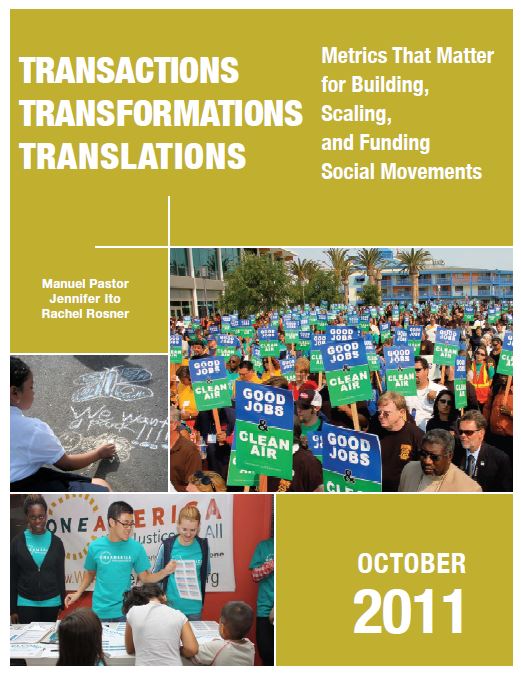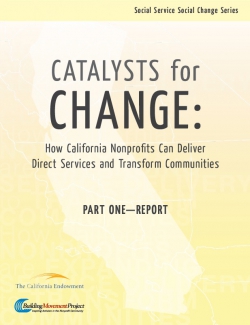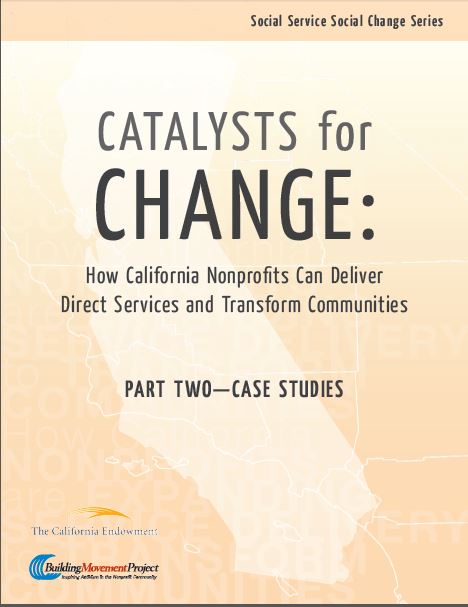
Transactions, Transformations, Translations
“Transactions, Transformations, Translations: Metrics That
Matter for Building, Scaling, and Funding Social Movements” is a way of looking at organizational growth and the alliance building that brings groups together. This evaluation approach can capture the importance of narrative and numbers, of politics and policies, of transformation as well as transaction.

Catalysts for Change: How California Nonprofits Can Deliver Direct Services and Transform Communities (REPORT)
With the support of The California Endowment, the Building Movement Project surveyed over 450 California-based nonprofit direct service providers to explore whether they are integrating social change activities into their work. The survey results, which are discussed in Part One of Catalysts for Change, demonstrate that the language and activities of civic engagement, constituent voice, and social change are familiar to service providers in California, even if they may not be universally agreed upon. The range of activities beyond services reveals a clear need for more support and direction for service providers that are interested in addressing the systemic causes of problems facing clients. The report offers recommendations that speak to the roles funders, nonprofit technical assistance providers, intermediaries, academics, and others can play in helping organizations integrate social change-oriented efforts into their existing direct service work.
To read Part Two: Case Studies of Catalysts for Change, click here.

Catalysts for Change: How California Nonprofits Can Deliver Direct Services and Transform Communities (CASE STUDIES)
With the support of The California Endowment, the Building Movement Project surveyed over 450 California-based nonprofit direct service providers to explore whether they are integrating social change activities into their work. Part Two of Catalysts for Change offers five in-depth case studies of California-based health and social service providers that are engaging in non-service activities to address systemic issues – including poverty, inequality, and health disparities – as well as building the voice and power of their constituents. The case studies illustrate and highlight many of the concepts explored in Part One of Catalysts for Change and they give readers the opportunity to delve more deeply into the work of different organizations that are engaged in direct service delivery and other change-oriented activities.
To read Part One: Report of Catalysts for Change, click here.
